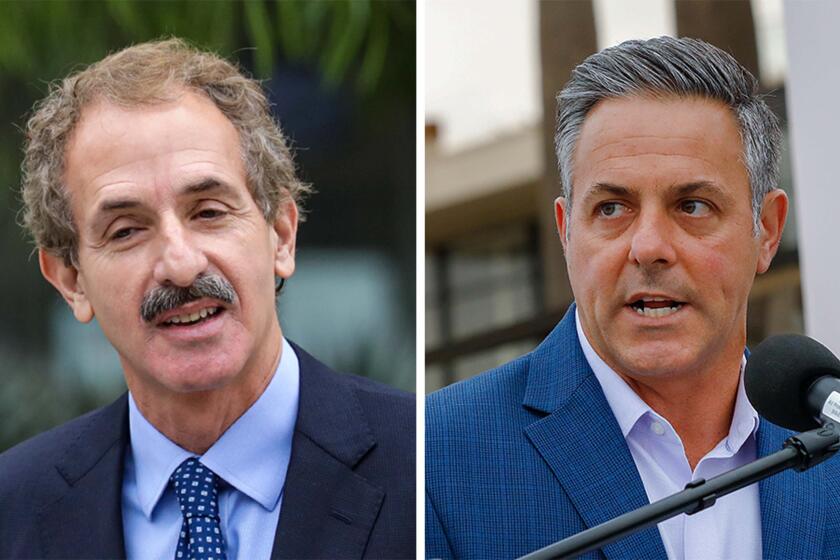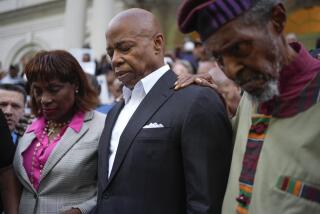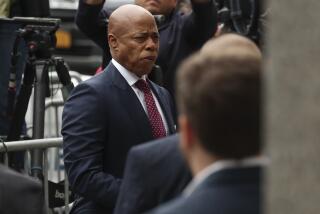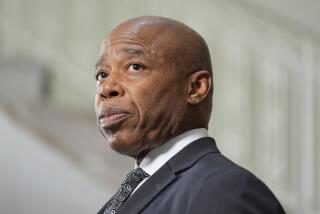New York City’s new mayor pushes to remove homeless people from subway system
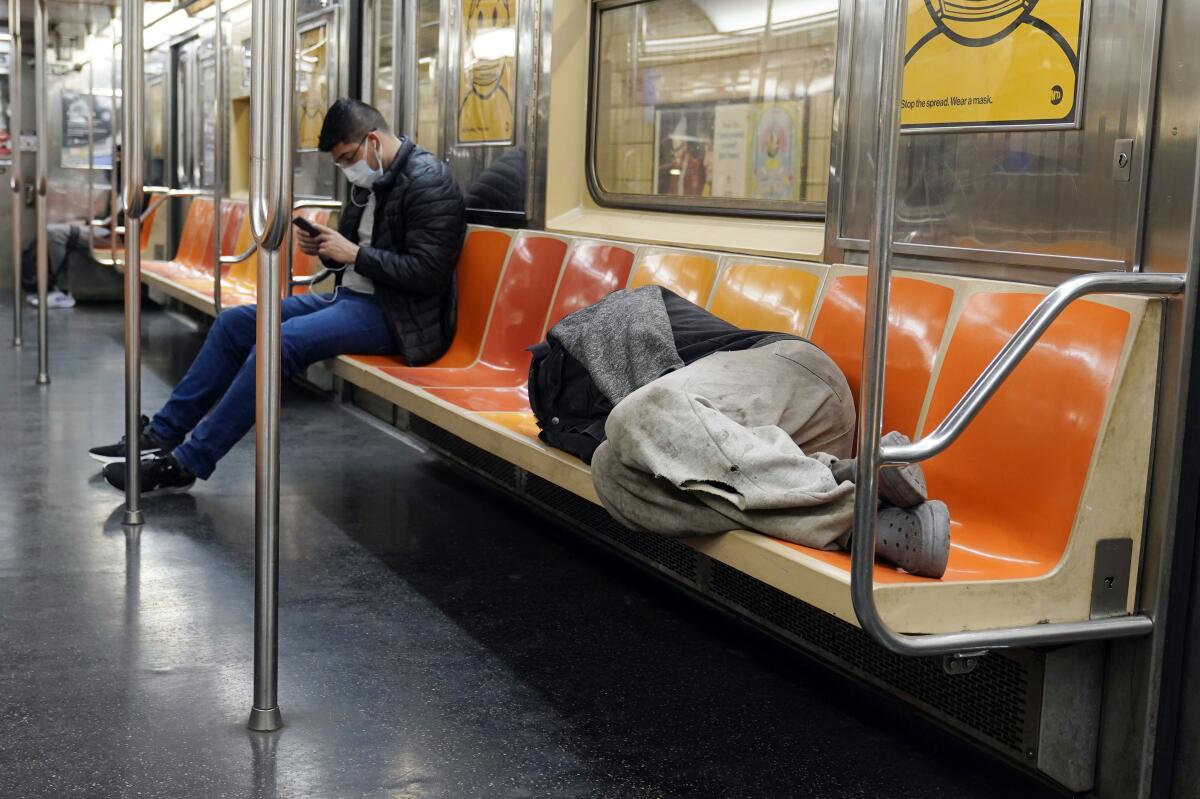
NEW YORK — New York City Mayor Eric Adams is making an aggressive push to try to remove homeless people from the city’s sprawling subway system, announcing a plan to ban people from sleeping on trains or riding the same lines all night.
The new mayor, at one point likening homelessness to a “cancerous sore,” said Friday that the city next week would deploy more teams of police officers and mental health workers to the transit network and start enforcing rules more strictly.
“People tell me about their fear of using the system, and we are going to ensure that fear is not New York’s reality,” Adams said.
New York Gov. Kathy Hochul, who joined Adams at a subway station Friday to make the announcement, said the city and state can’t recover from the devastation of the pandemic until people return to their jobs — and ride the subway to get there.
She said the state was working to get more psychiatric beds at hospitals available by increasing the amount of money hospitals receive for having the beds. Many of the city’s homeless people suffer from mental illness.
“We know it’s a big problem. But shame on us if this moment in time, if we don’t turn over every single stone, find every possible way to deal with this,” Hochul said.
Two L.A. politicians jumped into the mayor’s race early. But are they now in danger of being drowned out?
Adams, a former New York City police captain and transit officer who once patrolled the subway system, said the vast majority of unhoused people are not dangerous. But the pandemic has exacerbated the issue, with more people dealing with job loss and untreated medical and mental health issues, and some of those people are dangerous to themselves and the public.
Adams called it a complex problem, saying, “You can’t put a Band-Aid on a cancerous sore,” but rather, “You must remove the cancer and start the healing process.”
Shelly Nortz, the deputy executive director for policy at the Coalition for the Homeless, called the mayor’s comment “sickening” and said “criminalizing homelessness” was not the answer.
“Repeating the failed outreach-based policing strategies of the past will not end the suffering of homeless people bedding down on the subway. It is sickening to hear Mayor Adams liken unsheltered homeless people to a cancer. They are human beings,” Nortz said.
Adams’ spokesperson, Fabien Levy, responded by saying the mayor “was abundantly clear today that his heart breaks when he sees fellow New Yorkers sleeping on trains.”
“We are not going to abandon those who are experiencing homelessness to lives of suffering and pain and we are not going to allow the betrayal of these individuals to continue any longer. We can help those in need, uphold the law, and restore public confidence in our transit system all at the same time,” Levy said.
Nortz did say the coalition was pleased to hear that part of the plan would involve expanding the number of psychiatric beds at hospitals.
As subway ridership cratered during the pandemic, homeless people became more visible, sometimes sleeping on platforms or several seats on a train, something the mayor has said contributes to a general feeling of “disorder” in the nation’s largest city.
The mayor, who has emphasized the appearance of crime and disorder as being just as important to tackle as the actual crime statistics, said it was unacceptable that a woman lived under a station stairway for months.
“That is not dignity. That is disgusting,” he said. “And that’s not who we are as a city.”
In addition to the tens of thousands of people who sleep in the city’s shelter systems, there are uncounted thousands sleeping on the city’s streets and sometimes subway stations and trains.
Adams announced last month that he would assign more police officers to the system, not only riding trains but also patrolling stations and platforms.
The crackdown was spurred by a string of violent incidents, including the death of a woman who was pushed in front of a train in January and the stabbing Thursday afternoon of a man who was breakdancing on a train by another man who then fled.
The man suspected of shoving Michelle Alyssa Go to her death, Martial Simon, was homeless and had a history of “emotionally disturbed encounters,” police said.
Adams said that on his first day as mayor, as he commuted by subway to City Hall, he witnessed a fight and at least one person sleeping on a train.
“Who wants to start their day that way? Of that level of despair that’s right in front of them?” the mayor said Friday.
Police statistics show major felonies in the subways have dropped over the last two years, but the numbers are difficult to compare since ridership numbers have dropped as well.
Police Commissioner Keechant Sewell said that, starting next week, NYPD officers would be joined by mental health workers in the subways. The teams will focus on high-traffic areas or areas where there have been increased reports of crime.
“Trained people will look to assist those in need. We will enforce transit rules when necessary, but this is about helping people,” she said.
More to Read
Sign up for Essential California
The most important California stories and recommendations in your inbox every morning.
You may occasionally receive promotional content from the Los Angeles Times.
